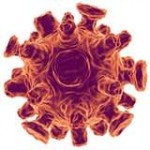Cytomegalovirus in post transplant patients: Difference between revisions
No edit summary |
|||
| Line 5: | Line 5: | ||
<br>The cytomegalovirus (CMV) is part of the Herpesviridae viral family also known as herpesviruses. Herpesviruses share common characteristics including the ability to remain metabolically inert within the human body for extended periods of time. The human cytomegalovirus (HCMV) also known as Human herpesvirus 5 (HHV-5) is a species that causes infections typically associated with the salivary gland. CMV is a common virus where about 50%-100% of the general adult population is infected. However, most people who are infected are unaware since the virus is typically dormant in healthy individuals. Those with compromised immune systems undergo symptoms similar to mononucleosis, a viral infection caused by the Epstein-Barr virus (another herpes virus). Immunocompromised individuals such as organ transplant recipients and AIDS patients… <br> | <br>The cytomegalovirus (CMV) is part of the Herpesviridae viral family also known as herpesviruses. Herpesviruses share common characteristics including the ability to remain metabolically inert within the human body for extended periods of time. The human cytomegalovirus (HCMV) also known as Human herpesvirus 5 (HHV-5) is a species that causes infections typically associated with the salivary gland. CMV is a common virus where about 50%-100% of the general adult population is infected. However, most people who are infected are unaware since the virus is typically dormant in healthy individuals. Those with compromised immune systems undergo symptoms similar to mononucleosis, a viral infection caused by the Epstein-Barr virus (another herpes virus). Immunocompromised individuals such as organ transplant recipients and AIDS patients… <br> | ||
[[Image:Viron.gif|thumb|300px|right|Figure 2. The CMV virion has a similar composition to all human herpes viruses (HHV). [http://detadoctor.com/deta-ap/cytomegalovirus/].]] | |||
<br>By <br> | <br>By <br> | ||
Revision as of 02:02, 21 April 2015
Introduction

Introduce the topic of your paper. What microorganisms are of interest? Habitat? Applications for medicine and/or environment?
The cytomegalovirus (CMV) is part of the Herpesviridae viral family also known as herpesviruses. Herpesviruses share common characteristics including the ability to remain metabolically inert within the human body for extended periods of time. The human cytomegalovirus (HCMV) also known as Human herpesvirus 5 (HHV-5) is a species that causes infections typically associated with the salivary gland. CMV is a common virus where about 50%-100% of the general adult population is infected. However, most people who are infected are unaware since the virus is typically dormant in healthy individuals. Those with compromised immune systems undergo symptoms similar to mononucleosis, a viral infection caused by the Epstein-Barr virus (another herpes virus). Immunocompromised individuals such as organ transplant recipients and AIDS patients…

By
At right is a sample image insertion. It works for any image uploaded anywhere to MicrobeWiki. The insertion code consists of:
Double brackets: [[
Filename: PHIL_1181_lores.jpg
Thumbnail status: |thumb|
Pixel size: |300px|
Placement on page: |right|
Legend/credit: Picture of the CMV virus. [3].
Closed double brackets: ]]
Other examples:
Bold
Italic
Subscript: H2O
Superscript: Fe3+
HCMV role in cancer
Include some current research, with at least one figure showing data.
Section 2
Include some current research, with at least one figure showing data.
Section 3
Include some current research, with at least one figure showing data.
References
[1] Hodgkin, J. and Partridge, F.A. "Caenorhabditis elegans meets microsporidia: the nematode killers from Paris." 2008. PLoS Biology 6:2634-2637.
Authored for BIOL 238 Microbiology, taught by Joan Slonczewski, 2015, Kenyon College.
